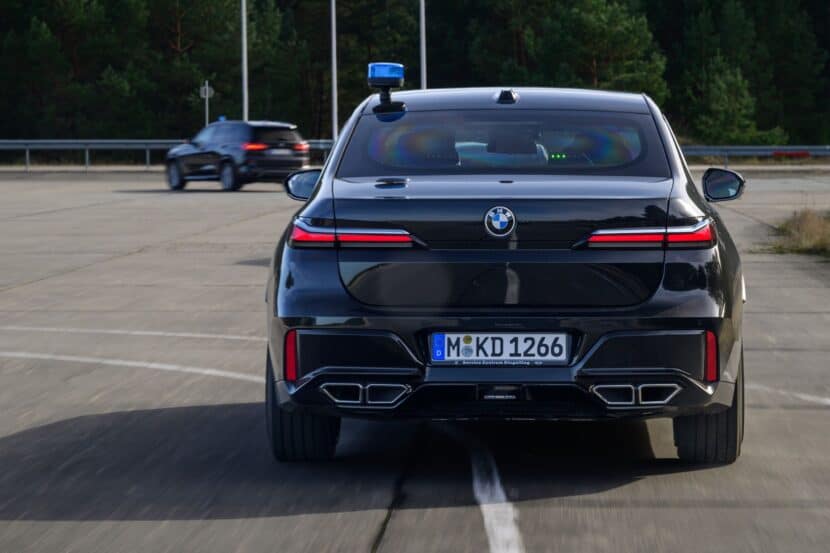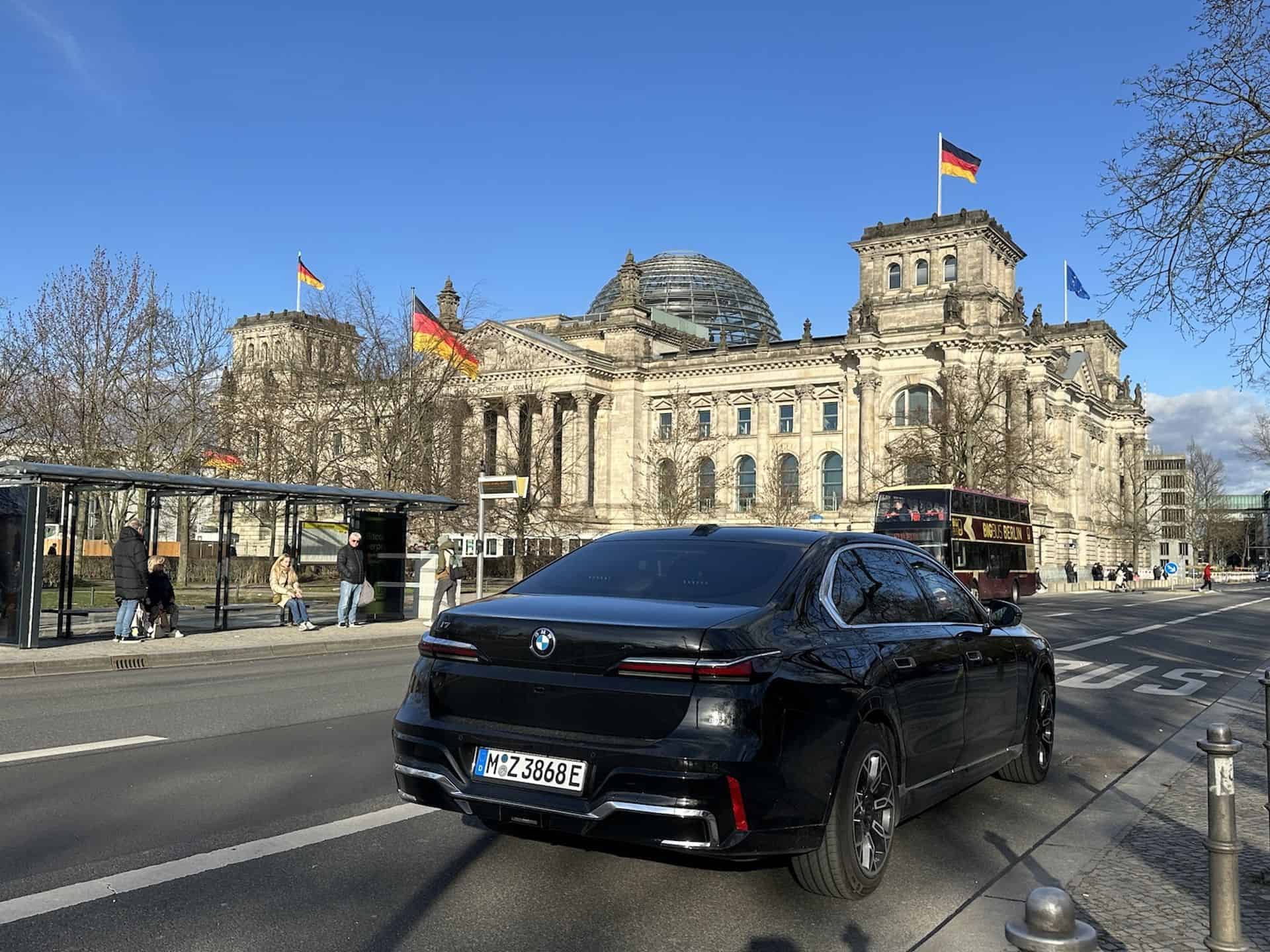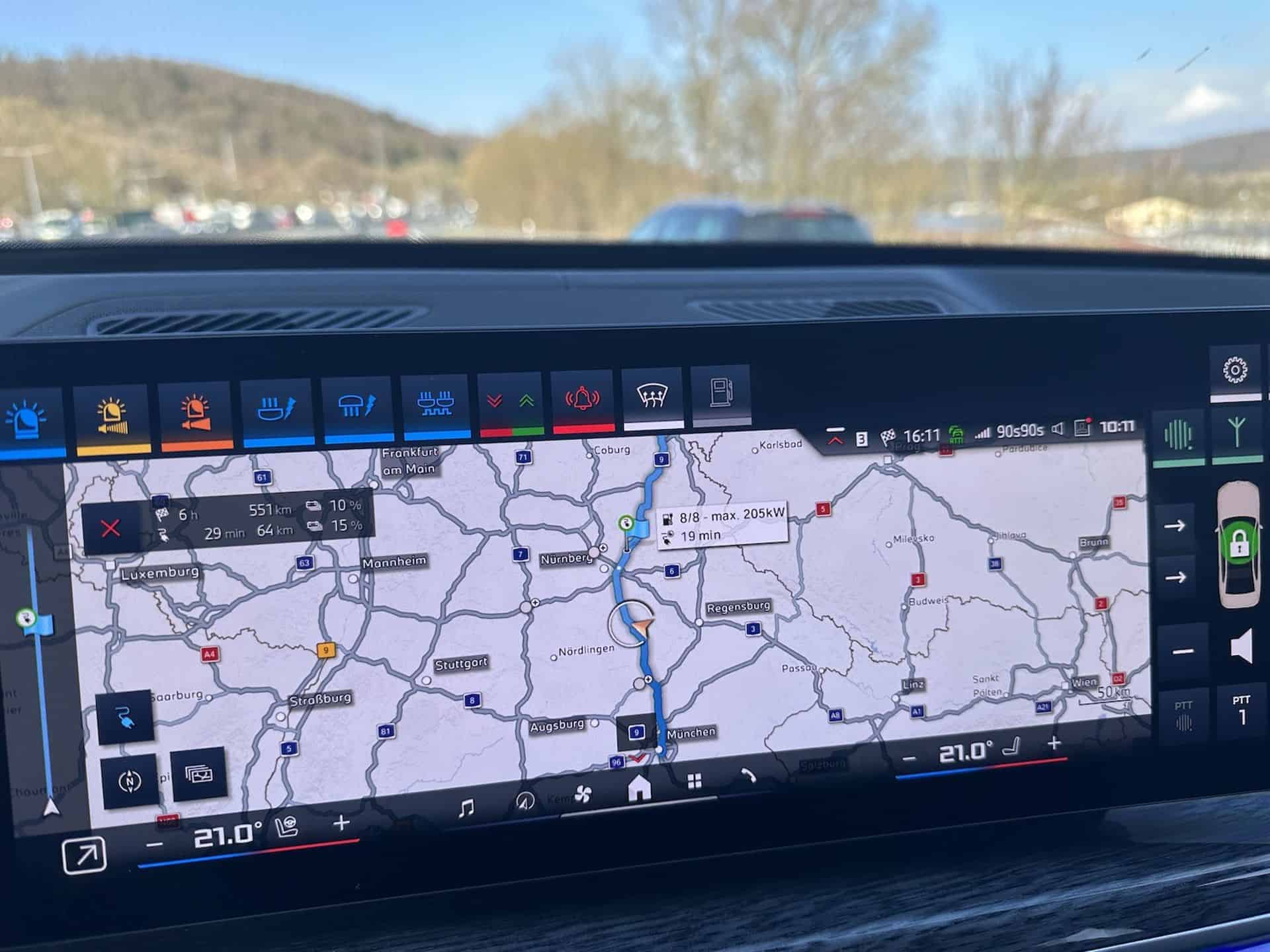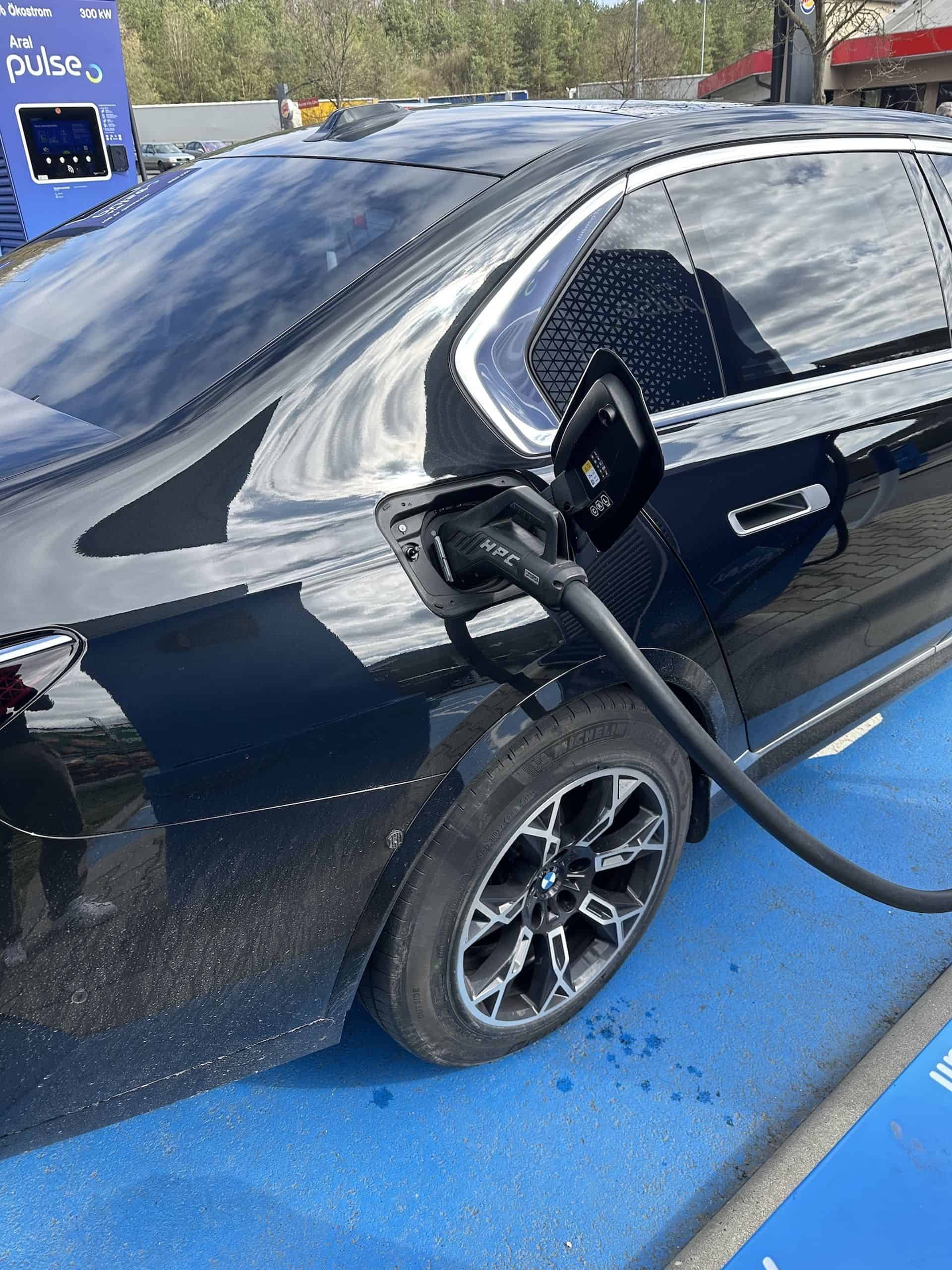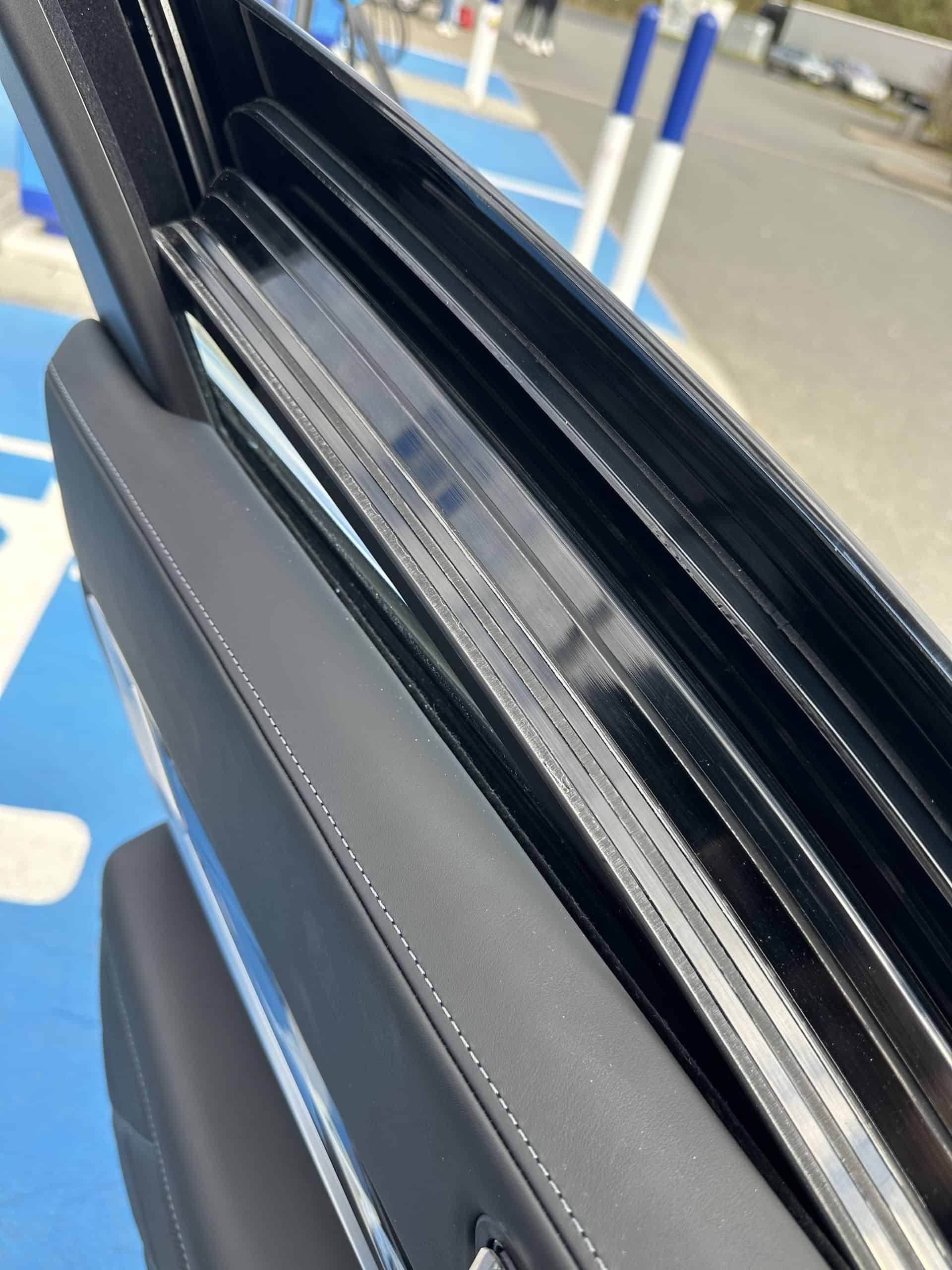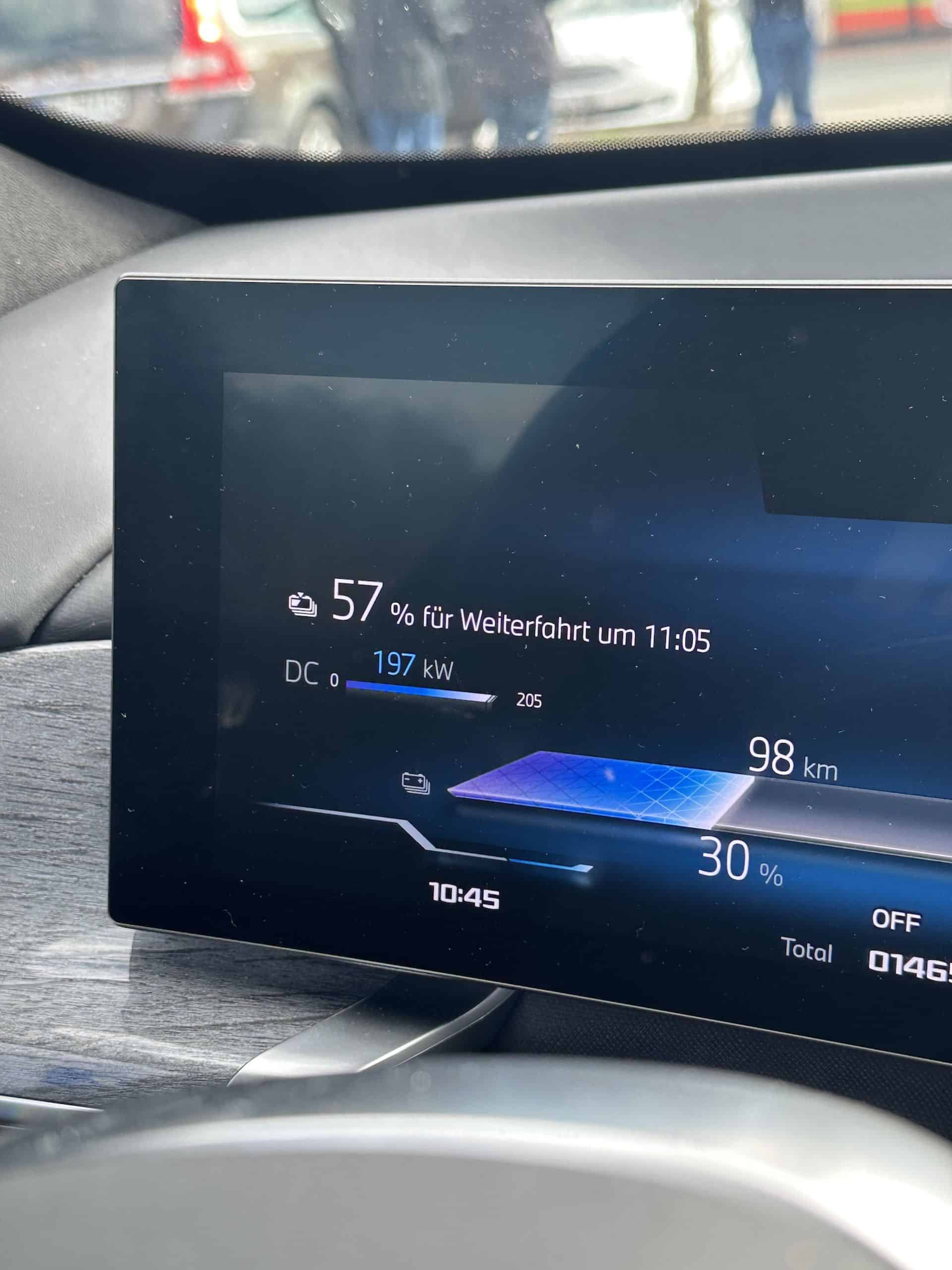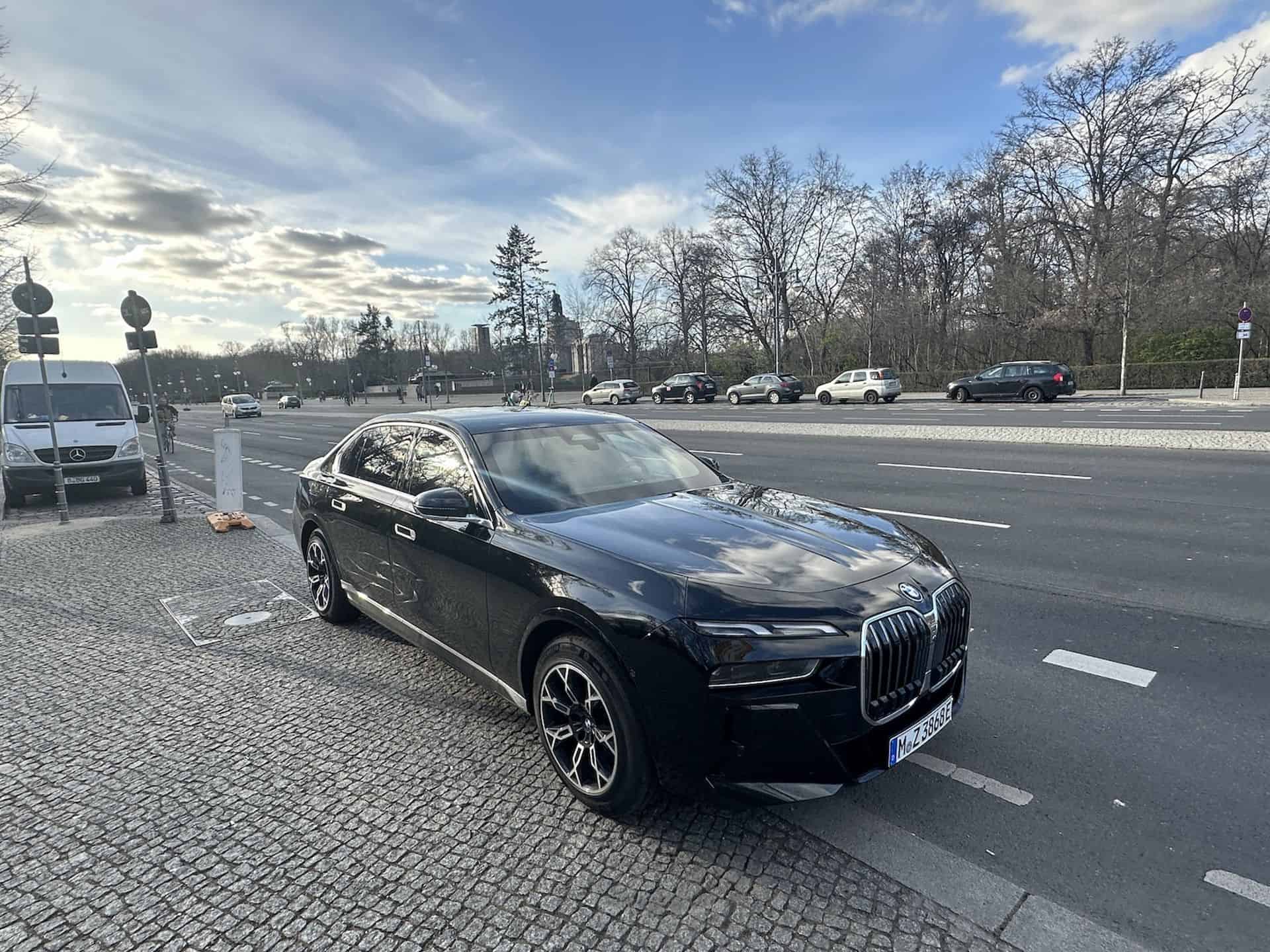Armored vehicles are a global trend, and electric cars are prevalent in many industrial nations. BMW is the first manufacturer to combine both armored protection and electric propulsion in the 7 Series. And hardly anyone notices. This car is a practical few-day-test of a different kind. On the German Autobahn A9 highway towards Berlin, the black BMW 7 Series causes a stir for the first time at the Hermsdorfer Dreieck interchange to the A4. Officers from the local highway patrol stared out of their patrol car at the supposedly inconspicuous i7.
A Stir on the Autobahn
Discussions ensued between the two police officers inside because they immediately recognized the black luxury sedan as an armored version and probably wanted to know which well-known personality was being chauffeured in the rear with the best possible protection. This is not evident from the centimeter-thick bulletproof glass and electrically closed blinds. Even if marketing brochures and advertising slogans would have you believe otherwise: an armored limousine is definitely recognizable as such – at least at second glance and especially for those who know their way around, like the two law enforcement officers who prefer the turn-off to the service area on the A9 and don’t want to check the BMW i7 xDrive 60 Protection after all. This time it’s not the transportation of an endangered person from politics or business, but a pure transfer trip from Munich to Berlin on a sunny Sunday.
Under the Hood: BMW i7’s Unique Features
All this happens at a gentle gallop, because the black BMW from Dingolfing’s one-off production not only carries the supposed secret of heavy armoring according to the VR9 / VR10 protection class classification, but also two electric motors on the front and rear axles. This makes the 4.5-tonne colossus slower than it already is, as it electronically brakes at a weary 160 km/h – despite 400 kW / 544 hp. The reason appears to be anticipatory obedience, because anyone driving an electric car – and especially such a colossus weighing several tons – will be punished by the range indicator sooner than they would like.
However, even without the blue or blue-red flashing lights, safety convoys in Germany and some other countries often travel at speeds far in excess of 160 km/h. “Honestly – what’s the point?” says a long-standing bodyguard from North Rhine-Westphalia, “we are often traveling much faster on the connecting routes between appointments with two or more vehicles.” In everyday life, however, this will hardly bother any politicians, business leaders, or BMW development managers.
This is because the electrically powered BMW i7 Protection is primarily intended for safe transport within cities and large areas. From the airport to the meeting hall or the party headquarters to the TV show – that’s it. Those traveling longer distances will be traveling with a combustion engine, and BMW also offers this as a 390 kW / 530 hp heavy-duty tank, which is then more suitable for highways at speeds of up to 210 km/h.
However, the electric heavy tank is likely to find its advocates in politics in particular, as many politicians have been switching from the armored model to a supposed eco-version with hybrid drive or even a purely electric car shortly before the publicity event in order to make a lasting impression. The bodyguards concerned are tearing their hair out because every switch to an unarmored vehicle carries potential dangers. But aren’t politicians doing everything they can to appeal to environmental concerns and attract votes? On the A9, the car is relaxed, and the highway is so empty that there is not even a secret desire to push through a possible traffic jam with the blue flashers in the front grille and side mirrors. The attachable blue light is hidden in a special holder in the trunk anyway.
Comparison with Competitors
While the direct competitors from the Audi A8 and Mercedes S-Class as also heavy armored vehicles in the VR9 / VR10 armament class are only available with combustion engines, BMW is the first to equip its seven-series armored vehicle, which costs around 500,000 euros, with an optional electric drivetrain. They are a perfect match for the area of application for vulnerable people, because inside, the extensively armored seven-seater hardly differs from the normal luxury model. The power is sufficient to get out of any dangerous situation if necessary, and the impressive 745 Nm of torque in particular bring sovereignty to the propulsion of the armored cruiser. The i7 purrs lightly and silently – constant rain and hail – the armoring muffles this as well as all driving noises.
On the more than 450-mile-route from the lively Bavarian capital Munich to Berlin, however, it is not just the early maximum speed that needs to be taken into account, but also the three charging stops. Despite the 100 kWh battery pack in the underbody, which is protected against mines and bullets, there are still around 300 kilometers to go before the next charging stop. For a 4.5
-ton-tank, you could have imagined worse, and with a real consumption of just under 33 kWh per 60 miles, the vehicle uses only slightly more energy than the advertised 30 kWh. However, a little more charging speed than the almost 200 kW at the Hypercharger would also be a sensible solution in inner-city operation, but this would require an 800-volt on-board electrical system, which BMW currently does not have.
The Journey: Munich to Berlin
Relaxed, but with somewhat fuller roads, the dark colossus whirs along the A 100 and former Checkpoint Charly before meeting some of its petrol-powered colleagues in the government district, who are waiting behind the Reichstag and at the Chancellery for their valuable passenger cargo. The 5.39-meter-long security model is produced through a complex manufacturing process in Dingolfing. In accordance with protection class VR9, a self-supporting body structure made of armored steel combined with secured doors, underbody and roof armoring as well as safety glazing ensure the safety of the occupants.
These windows meet the requirements of the highest resistance class VPAM 10 for civilian special protection vehicles. The combustion version of the BMW 7 Series Protection also has an anti-spill fuel tank and, on special request, can also be upgraded with body armor in accordance with VPAM 10, which is designed to protect against bombardment with explosive charges and firearms of various kinds. The 20-inch wheel set has a Pax system with run-flat properties, which enables the vehicle to continue driving if the tires are defective. At high speeds, however, the wheels reach their limits much faster than normal tires.
Future Outlook and Technological Enhancements
While the armored vehicles of earlier generations were equipped with a jumble of switches for intercom, roof light, flashers, or fire extinguishers on the center console and behind flaps, the BMW i7 Protection offers no significant difference to the standard model. A function on the central touchscreen is the only way for the driver to access a special menu that provides access to special functions.
Even the doors can be closed electrically at the touch of a button, whereas in most armored versions the driver alone can open the centimeter-thick armored side window a few centimeters to pass through documents or for a parking ticket. In the rear, there is the familiar luxury for the guest to be secured, who can prepare for the next appointment on air-conditioned leather seats with massage function. Well protected than ever.
[Stefan Grundhoff; press-inform]
















